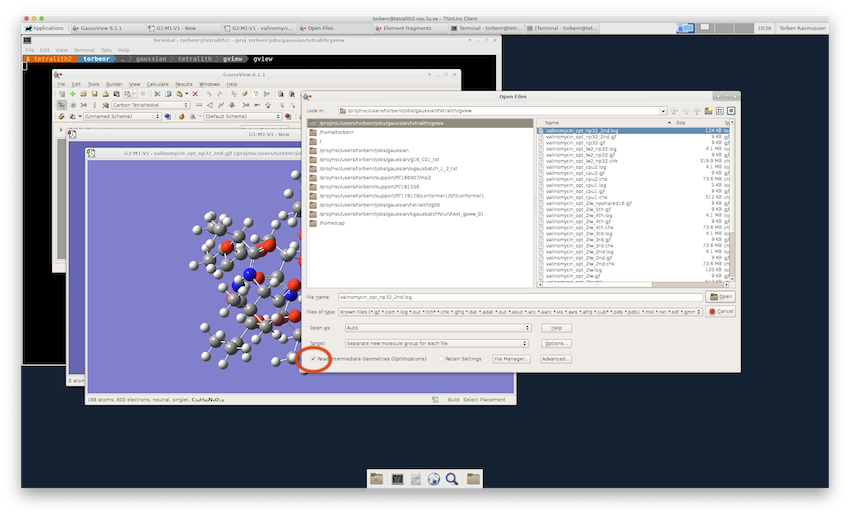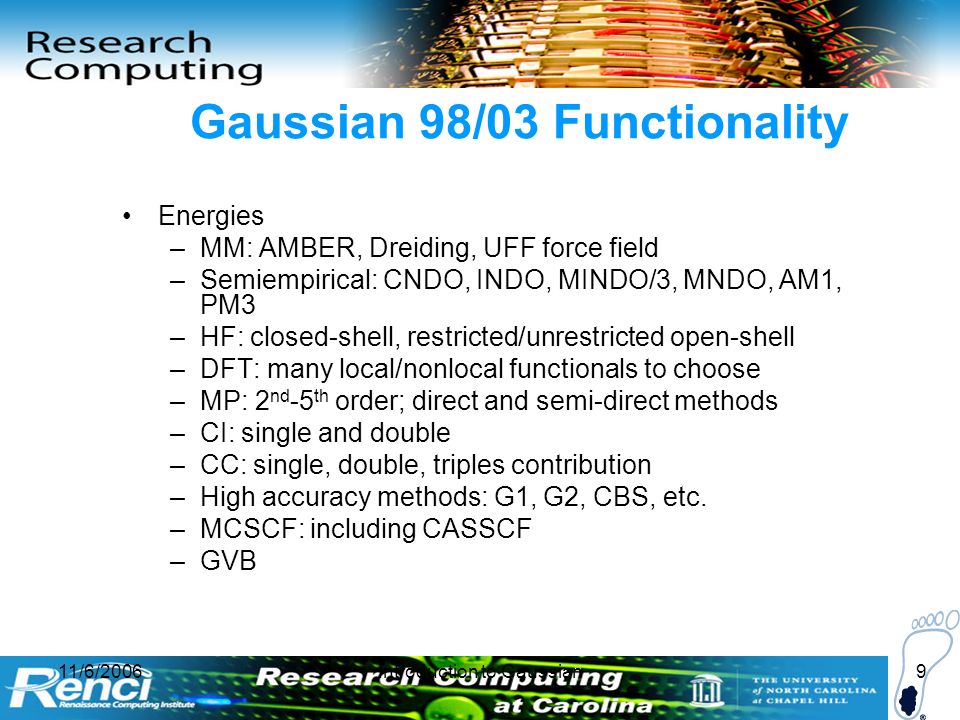Serial Number For Gaussview 6 Installation
- Serial Number For Gaussview 6 Installation
- Serial Number For Gaussview 6 Installation Manual
- Serial Number For Gaussview 6 Installation Instructions
- Gaussview 6 download. The Player Has To Unlock New Missions Through Completing The Previous Missions In The Game-play. These Special Features Can Be Experienced By The Player Only Through GTA San Andreas Free Download PC Game. The Player Can Perform Any Kind Of Activity In The Game As He Has The Freedom To Roam In The Locations.
- GaussView 6 Installation Instructions for Windows. Install Gaussian 16 or the Gaussian 16 Utilities if not already installed. Insert the GaussView 6 DVD. If the installation does not start automatically, -click the 'setup.exe' double application on the DVD. If the 'User Account Control' window pops up, click 'Yes' to launch it.
Gaussian is a commercial software package for electronic structure modelling. The University of Calgary has acquired a site license for the Linux source code for Gaussian 16 and the TCP Linda 9 software that allows for parallel execution of Gaussian 16 on multiple compute nodes.
We are also licensed for the Microsoft Windows version of the graphical pre- and post-processing program GaussView 6. Note, however, that we do not have a Linux vesion of the software, so, GaussView cannot be run on ARC. If you use a Microsoft Windows desktop or laptop computer and have been granted access to the software after agreeing to the license conditions, GaussView 6 can be downloaded from ARC, as mentioned below.
Here we concentrate on using Gaussian 16 on ARC, but, the software can also be installed on other Linux-based machines at the University of Calgary.
General information
- g16 command line options:
Disabling them speeds up the installation process. Locate the serial number. The serial number is located at the bottom of the DVD sleeve. For more information on finding the serial number, see Find the serial number of your Elements products. If you have a redemption code, convert the redemption code to a serial number.

- http://gaussian.com/options/
- Linda:
- http://gaussian.com/lindaprod/

- Google search on Gaussian input file format:
- https://www.google.com/search?client=firefox-b-e&q=gaussian+input+file+format

- Compute Canada Gaussian Errors article:
- https://docs.computecanada.ca/wiki/Gaussian_error_messages
Although the University of Calgary has a Gaussian 16 site license, access to the software is only made available to those researchers who are able to confirm that they can abide to the conditions of a license agreement. The license agreement can be downloaded from
on ARC.
If you would like access to run Gaussian 16 on ARC or download GaussView 16 for use on a Microsoft Windows computer located at the University of Calgary, please send an email to support@hpc.ucalgary.ca with a subject line of the form: Gaussian access request (your_ARC_user_name) with the body of the email including a copy of the statement:
After your email has been received and approved, your user name will be added to the g16 group on ARC, which is used to control access to the directory containing the software.
Look under /global/software/gaussian .
Installing GaussView 6.0 for Windows
The licensing terms for the GaussView 6.0 software require that it is installed on a University of Calgary owned and controlled computers only. If you have a Windows laptop or a workstation that is centrally managed by the UofC IT department,you can install GaussView on it yourself using the Software Centre on the computer. Look for GaussView 6.0 in the Software Centre.
Running Gaussian batch jobs
Researchers using Gaussian on ARC are expected to be generally familiar with Gaussian capabilities, input file format and the use of checkpoint files.
Like other calculations on ARC systems, Gaussian is run by submitting an appropriate script for batch scheduling using the sbatch command. For more information about submitting jobs, see Running jobs article.
Sample scripts for running Gaussian 16 on ARC will be supplied once testing of the software is complete and installed on ARC under /global/software/gaussian .
Gaussian 16 modules
Currently there are two software modules on ARC that provide Gaussian16.You can see them useing the module avail:
There are two kinds of compute nodes in ARC. The newer nodes with Intel Skylake CPUs are in the cpu2019, apophis-bf, razi-bf, and pawson-bf partitions.The older nodes, legacy nodes have older Intel Nehalem CPUs, these are in lattice and parallel partitions.
Gaussian on ARC was compiled for these two different types of Intel CPUs separately to providemaximum performance on each of the CPU kinds.So, the Gaussian16/b01-nehalem module has to be loaded when submitting a job to the legacy partitions,and the Gaussian16/b01-skylake should be used when the job is sent to the newer partition.When the partition is not specified, the job goes to the default partitions with newer CPUs.
Once the module is loaded it provides access to the g16 executable program.
The module, however, does not need to be loaded on the login node, it has to be loaded on the compute node that is going to workon your computation.The best place to load the module is the job script for your computation.
Running a Gaussian Job
To run your computation on ARC cluster you have to have two files: (1) a Gaussian .com input file and (2) SLURM job script .slurm.Put or prepare the files in the directory dedicated to the computation, dimer for example:
To submit the jobs simply

The number printed out during submission is a job ID of you job that can be used to monitor its state.
Like this:
The output of the squeue command may look different for you, depending on your settings.
You can also get more information about the state of the job with
You will have to replace the number with the actual job ID of your job.
Input files
The Gaussian input file is a text file describing the geometry of your system as well as specifications of the computation you are going to perform. You have to consult the Gaussian manual and tutorials to create it.
Below is a geometry optimization run for a water dimer, dimer.com:
The dimer.com input file provides instructions for the Gaussian16 software.
Now you need to create a file for the ARC cluster's job manager, SLURM, and explain
- what resources the computation needs and
- how to do it.
An example job script, that can be used as a template is shown below.
The SLURM job script, dimer.slurm:
Generally, job scripts do not have to be that long and elaborate.This specific script does extra work for you:
- Determines if the job runs on a newer or older node and loads proper version of Gaussian for it.
- Sets the number of CPUs, amount of memory and the scratch directory for Gaussian based on the resource request from SLURM.
- Prints out the accepted settings for the run.
and then it runs Gaussian as the last command.
Output files
The run will produce three more files: dimer.chk, dimer.log, and slurm-5527893.out.
The .chk file is a Gaussian check point file that we requested in the input .com file, it can be used to restart or continue the computations from it. The Gaussian output goes into the .log file. Look into the .log file for your results.
The slurm-...out file is the intercept of what would be printed on screen during the job run time. When the job runs there is no screen and the output is captured and saved into this file. The number in the file name is the job ID of the job, which is printed out when you submit the job withthe sbatch command.
Defining your own system
You can start by using these two example files on ARC to run your first job. If everything goes smoothly you can try defining your own system and changing the resource requests to match your specific case.
Some type of computations can be spread over several compute nodes when using Gaussian16.Gaussian is using its own custom add-on to the main Gaussian16 program, called Linda.Linda is a separate product and it has to be purchased and licensed separately.ARC cluster does have the Linda add-on installed and available for use.
To spread computation across several nodes Linda logs into additional nodes using SSH and starts additional instances of Gaussian16 on them. The main instance of Gaussian16 on the first node assumes control of the additional instances.While the additional instances can provide additional computational capacity, communication timerequired for the master instance to send the work and receive the results back can be so long, that the communication burden can make the mutli-node computation slower than a single node computation.You have to know that the method you are going to use can run well on several nodes and test the performance benefitbefore you commit to running a large number of multi-node jobs.
Gaussian computational options can be specified in any of 4 ways (in the order of precedence):
- as a % link in the input .com file,
- as a command line option for the g16 program,
- as an environmental variable,
- and as a directive in the Default.Route file.
The examples below show how to control Linda runs using the command line options, so please make sure that you do not try to pass conflicting control information using the other methods at the same time. This may lead to unpredictable behaviour.
The job scripts below show how to setup jobs on the cpu2019, parallel, and lattice partitions on ARC.These partitions have special fast network interconnect that is suitable for multi-node computations.
The example computation from above, the dimer.com input is simple and short, so it does not provideany significant computational demand that would benefit from running on multiple nodes.The timing table below demonstrate that:
Clearly, one has to evaluate the benefits of using more resources before committing to a specific computational configuration.

Skylake CPUs, cpu2019 partition
The default partitions in ARC have 40 CPUs and 180GB of allocatable memory. These are the best compute nodes to run on. The example job script below sets up a Gaussian16 job using 2 compute nodes with 40 CPUs on each, 80 CPUs in total.
job.slurm:
Nehalem CPUs, parallel partition
The parallel partition contains nodes that have 12 CPUs and 22GB of allocatable memory. These nodes have CPUs from 2011 and the CPU architecture is called Nehalem.These CPUs are about 50% performance of the cpu2019 CPUs. Also, the code for these CPUs does not support features of the more modern CPUs, so Gaussian16 had to be compiledspecifically for them, that is why the jobs should be using a different Gaussian16 module.The example job script below sets up a Gaussian16 job using 4 compute nodes with 12 CPUs on each, 48 CPUs in total.
job.slurm:
Nehalem CPUs, lattice partition
The lattice partition contains nodes that have 8 CPUs and 10GB of allocatable memory. These nodes have CPUs from 2010 and are similar to the CPUs in the parallel partition.The example job script below sets up a Gaussian16 job using 6 compute nodes with 8 CPUs on each, 48 CPUs in total.
job.slurm:
Serial Number For Gaussview 6 Installation
The number of GPUs and GPU nodes on ARC is relatively small and the benefit of using GPUs for Gaussian 16 installed on ARC does not seem significant enough to justify the use of the limited resources.Thus, we neither recommend nor support Gaussian jobs using GPUs at this moment.
Serial Number For Gaussview 6 Installation Manual
Please send any questions regarding using Gaussian on ARC to support@hpc.ucalgary.ca.